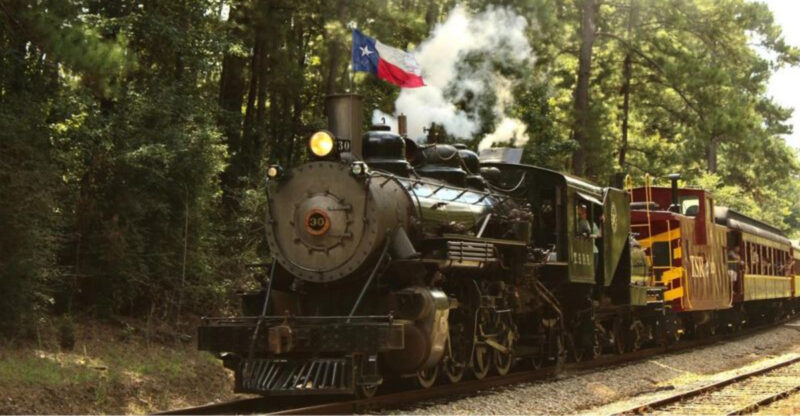20+ Texas Malls That Shaped Shopping In The Lone Star State

Texas has always been big on everything, and its shopping malls are no exception. From the sprawling complexes of Houston to the trendy spots in Dallas, these retail destinations have defined how Texans shop, socialize, and spend their weekends for decades.
I’m taking you on a tour through the malls that made shopping history in the Lone Star State.
1. NorthPark Center
Walking through this Dallas landmark feels like stepping into a world where art meets commerce. The mall opened in 1965 and quickly became famous for its museum-quality sculptures and paintings displayed throughout the property.
I love how the natural light floods in through skylights, making every shopping trip feel special. With over 235 stores, you’ll find everything from luxury brands to your favorite chain shops all under one elegant roof.
2. The Galleria Houston
Picture an ice skating rink right in the middle of a Texas shopping center, and you’ve got Houston’s most iconic mall. Since 1970, families have been gliding across the ice while taking breaks from browsing hundreds of stores.
This four-level wonderland houses more than 400 stores and restaurants. The glass ceiling above the rink creates a magical atmosphere that makes you forget you’re in the heart of humid Houston.
3. South Plains Mall
Out in West Texas, this Lubbock shopping destination has served the community since 1972. Locals depend on it as the primary retail hub for miles around, offering brands that might otherwise require a road trip.
The mall anchors the region’s economy and provides a gathering space for teenagers, families, and everyone in between. You’ll find about 140 stores here, making it the shopping heart of the South Plains region.
4. Barton Creek Square
Austin’s southwest side got a major upgrade when this mall opened in 1981. The limestone exterior fits perfectly with the Hill Country aesthetic that defines the area.
I appreciate how it balances upscale retailers with accessible brands, reflecting Austin’s diverse population. With nearly 180 stores, it remains one of the city’s top shopping destinations, drawing crowds from surrounding suburbs and beyond every weekend.
5. Willowbrook Mall
Northwest Houston welcomed this shopping center in 1981, and it quickly became the neighborhood’s social hub. The mall features a distinctive design with plenty of natural light and open spaces.
Families from nearby suburbs make this their go-to weekend destination. The anchor stores and specialty shops create a balanced mix that appeals to shoppers of all ages and budgets throughout the year.
6. The Parks at Arlington
Between Dallas and Fort Worth sits this open-air shopping experience that reimagined what Texas malls could be. Opening in 1988, it brought the outdoor lifestyle concept to a state known for its weather extremes.
You can stroll between stores under the Texas sky, enjoying fountains and green spaces. The location near major sports venues makes it a popular stop for visitors catching games at nearby stadiums.
7. Stonebriar Centre
Frisco’s retail crown jewel opened in 2000 as suburbs sprawled northward from Dallas. The timing was perfect, catching the wave of population growth that transformed Collin County.
This mall features a stunning 24-screen movie theater and over 165 stores. I find the layout intuitive and the atmosphere upscale without being pretentious, making it ideal for both casual browsing and serious shopping missions.
8. Memorial City Mall
West Houston got its premier shopping destination in 1966, though you wouldn’t recognize it from those early days. Massive renovations have transformed it into a contemporary retail palace with natural light streaming through expansive skylights.
The mall serves the affluent Memorial area with upscale retailers and dining options. Its recent upgrades keep it competitive in Houston’s crowded shopping scene.
9. La Plaza Mall
Down in the Rio Grande Valley, McAllen’s shopping scene changed forever when this mall opened in 1977. The location near the Mexican border makes it a destination for international shoppers seeking American brands.
You’ll hear Spanish and English mixing in the corridors as families from both sides of the border browse together. The mall has expanded several times to meet growing demand from the Valley’s booming population.
10. Collin Creek Mall
Plano’s first major mall opened in 1981 and became a teenage hangout for an entire generation. Though it closed in 2019, its impact on North Texas suburban culture can’t be overstated.
I remember the excitement it generated when anchor stores first opened their doors. The mall represented suburban prosperity and the good life that drew families to Plano throughout the 1980s and 1990s.
11. The Domain
Austin’s shopping landscape shifted dramatically when this mixed-use development opened in 2007. Combining high-end retail with apartments, offices, and restaurants created a live-work-play environment that felt very un-mall-like.
Walking through feels more like exploring an upscale urban neighborhood than traditional shopping. The open-air design and luxury brands attract affluent Austinites and tourists seeking a sophisticated retail experience under the Texas sun.
12. Hulen Mall
Fort Worth’s southwest side got its shopping anchor in 1977 with this regional favorite. The mall has maintained its relevance through smart renovations and tenant mix adjustments over the decades.
Local families consider it their neighborhood mall, offering familiar stores without the overwhelming size of mega-malls. You’ll find about 130 retailers here, making it manageable for a few hours of shopping without feeling exhausted.
13. Sunrise Mall
Corpus Christi’s primary enclosed mall opened in 1980, serving the Coastal Bend region. The location near the bay makes it a convenient stop for both locals and beach-bound tourists.
Though it has faced challenges in recent years, the mall remains an important retail hub for the area. Anchor stores and specialty shops continue drawing shoppers who appreciate air-conditioned comfort in the humid coastal climate.
14. The Woodlands Mall
When this mall opened in 1994, it perfectly matched the planned community’s upscale vision. The Woodlands was designed as a master-planned development, and its mall reflects that careful attention to quality.
You’ll find premium retailers and a refined atmosphere that appeals to the affluent residents of this Houston suburb. The mall’s success demonstrates how retail centers can anchor entire communities when done thoughtfully.
15. Vista Ridge Mall
Lewisville residents celebrated when this mall opened in 2001, bringing major retailers to the northern Dallas suburbs. The timing captured the area’s rapid growth as families moved to newer developments.
With around 140 stores, it serves multiple communities along the I-35E corridor. The mall offers a convenient alternative to driving into Dallas proper, saving locals time and making shopping more accessible for busy families.
16. Ingram Park Mall
San Antonio’s northwest side got this shopping center in 1979, and it quickly became a community cornerstone. The mall serves a diverse population with stores ranging from budget-friendly to mid-range options.
Families appreciate the variety and the comfortable atmosphere that makes weekend shopping trips enjoyable. Located near major highways, it draws shoppers from across the metro area seeking convenient access to popular national chains.
17. Broadway Square Mall
East Texas shopping centered around this Tyler mall when it opened in 1975. The region’s retail hub serves communities throughout the Piney Woods area who might otherwise travel to Dallas.
I find its role as a regional anchor fascinating, providing brands and stores that smaller East Texas towns simply can’t support. The mall remains vital to Tyler’s economy and social life decades after opening.
18. Music City Mall
This Lewisville landmark opened in 1979 and served the community for decades before closing. The name referenced the city’s musical heritage, creating a unique identity among generic shopping centers.
Though no longer operating, it shaped shopping habits for an entire generation of North Texas families. The mall represented suburban expansion and the retail boom that defined the late 20th century across Texas.
19. Ridgmar Mall
ort Worth’s west side welcomed this mall in 1976, and it has remained a steady presence through changing retail landscapes. Recent renovations have kept it feeling fresh and relevant.
The mall strikes a balance between national chains and local favorites, giving shoppers variety without overwhelming them. Its location near Interstate 30 makes it accessible for residents throughout western Tarrant County seeking convenient shopping options.
20. Grapevine Mills
When this outlet mall opened in 1997 near DFW Airport, it brought a different shopping model to Texas. The massive complex offers discount shopping on a grand scale, with over 180 stores under one roof.
Tourists often make it a destination when visiting the area, combining shopping with nearby attractions. The bargain-hunting atmosphere creates excitement that traditional malls sometimes lack, drawing deal-seekers from across the region.
21. Sunland Park Mall
El Paso’s west side got this shopping destination in 1988, serving both local residents and visitors from nearby New Mexico and Mexico. The location near the border makes it a cross-cultural shopping experience.
You’ll find a mix of American retailers and stores catering to Hispanic shoppers, reflecting the region’s demographics. The mall provides an air-conditioned escape from the desert heat while offering plenty of dining and entertainment options.
22. Katy Mills
West of Houston, this outlet mall opened in 1999 and immediately attracted bargain hunters from across the metro area. The massive complex offers discount shopping combined with entertainment options like an arcade and movie theater.
Families make day trips here, knowing they can shop, eat, and play all in one location. The outlet format appeals to budget-conscious Texans seeking name brands without the premium prices.
23. North East Mall
Hurst got its retail anchor in 1971, serving the Mid-Cities area between Dallas and Fort Worth. This mall has witnessed the entire evolution of suburban Texas shopping over five decades.
Recent renovations have kept it competitive, adding modern amenities while maintaining its neighborhood mall feel. With about 150 stores, it offers enough variety to satisfy most shopping needs without requiring a full day commitment.
24. Cielo Vista Mall
El Paso’s east side welcomed this mall in 1973, providing a shopping hub for the area’s growing population. The name means sky view in Spanish, reflecting the region’s bilingual culture.
Over the years, it has adapted to serve a diverse customer base from both sides of the border. The mall remains an important retail destination in a city where shopping options are more limited than in larger Texas metros.
25. Baybrook Mall
Between Houston and Galveston, this mall opened in 1977 to serve the growing Clear Lake area. Its location near NASA’s Johnson Space Center gives it a unique clientele including space industry professionals and their families.
The mall has undergone several expansions and renovations, keeping pace with the area’s growth. Shoppers from League City, Pearland, and surrounding communities rely on it as their primary retail destination.






